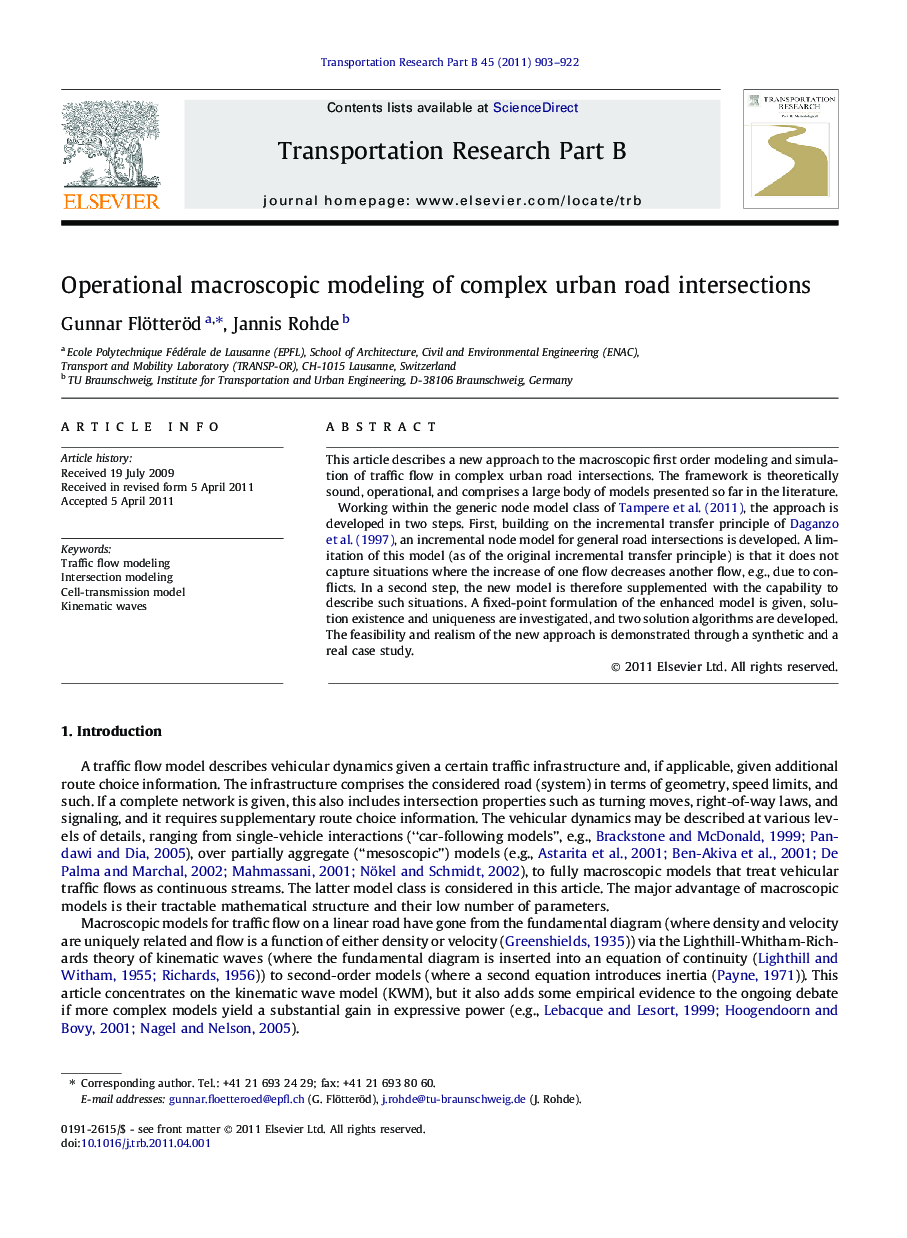| Article ID | Journal | Published Year | Pages | File Type |
|---|---|---|---|---|
| 1132618 | Transportation Research Part B: Methodological | 2011 | 20 Pages |
This article describes a new approach to the macroscopic first order modeling and simulation of traffic flow in complex urban road intersections. The framework is theoretically sound, operational, and comprises a large body of models presented so far in the literature.Working within the generic node model class of Tampere et al. (2011), the approach is developed in two steps. First, building on the incremental transfer principle of Daganzo et al. (1997), an incremental node model for general road intersections is developed. A limitation of this model (as of the original incremental transfer principle) is that it does not capture situations where the increase of one flow decreases another flow, e.g., due to conflicts. In a second step, the new model is therefore supplemented with the capability to describe such situations. A fixed-point formulation of the enhanced model is given, solution existence and uniqueness are investigated, and two solution algorithms are developed. The feasibility and realism of the new approach is demonstrated through a synthetic and a real case study.
► Comprehensive macroscopic modeling framework for complex urban road intersections. ► Identification of non-unique flow solutions in point-like macroscopic node models. ► Exemplary model validation against simulated and real-world data.
